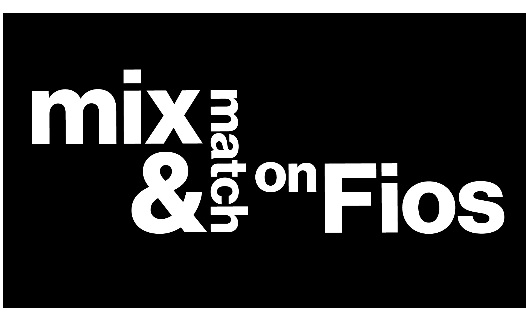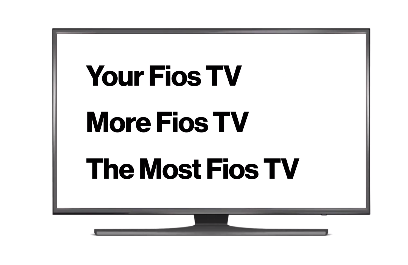Verizon Fios Breaks Cable Rules With 'Mix & Match'

Saying it wants to disrupt the cable industry, Verizon announced that it will be selling its Fios service a new way, offering subscribers more choices and eliminating contracts, hidden fees and forced bundling.
Verizon is promoting its new way of doing business as Mix & Match. Consumers start by picking an internet speed, with 100 Mbps, 300 Mbps and gigabit connections available for $39.99, $59.99 and $79.99 a month, respectively.
Then they can pick a video plan--including cutting the cord and using YouTube TV to get their TV channels. They can test drive all of Fios TV’s 425 channels for two months under a $50 a month test-drive plan.
After a two month test drive, Verizon will recommend a video package based on that consumer’s usage. The options are Your Fios TV, with 125 channel for $50 a month, More Fios TV, with 300 channels for $70 a month, or The Most Fios TV at $90 a month for 425 channels. YouTube TV has 70 channels for $49 a month. Customers opting for YouTube TV can get it as part of their Verizon bill, making paying for TV a bit simpler.

All packages include local broadcast stations.
Verizon can also help consumers pick a video plan based on a list of their five favorite channels.
Home phone is offered for $20 a month and tech support for the system is $15 a month.
Broadcasting & Cable Newsletter
The smarter way to stay on top of broadcasting and cable industry. Sign up below
“We really believe we are breaking the code of the cable industry with this new portfolio of offers,” said Frank Boulben, head of consumer marketing at Verizon.
With its new approach, Verizon is looking to bury cable’s triple play. “We recognize that times have changed and for most customers that wireless phone is the primary phone. And so we offer a home phone option. But that’s what it is, it’s an option. If you want it on top of your internet and TV you can have it. We are not forcing it on you” with discount-price bundles.
Boulben said the new system makes it easy for the consumer to figure out how much what they want will cost because of the elimination of discounts for buying two or three services. There are also no fees for broadcast channels or regional sports networks.
And he disagreed with the notion that eliminating contracts and discounts would increase churn.
“Fees are really a customer irritant. And that’s why the satisfaction levels of the cable industry are as low as they are,” he said.
Once customers have broadband, they can watch almost any streaming service they’d like. But if they want YouTube, it will be simpler for them.
Boulben declined to say if Verizon was looking to strike similar arrangements with other vMVPDs and streaming services.
“For now, we are offering YouTube TV. We are also offering Disney+. But stay tuned on what we are doing on the OTT front because it is a space that is moving rapidly,” he said.
“We believe Verizon's primary objectives are to retain video subs without conceding margin while putting its Internet marketing on the best possible footing with the full spectrum of customers,” said Peter Supino, analyst at Sanford C. Bernstein.
“With ‘custom’ video bundles, the marginal video customer gets what he/she wants (to not buy things that they won't watch), while Verizon optimizes its per subscriber video costs. This additional margin opportunity funds Verizon's elimination of video's infamous add-on service fees (but not set-top box rentals charges),” Supino said.
The Parents Television Council, which has long called for a la carte as a way to give parents more control on video to the home, called Verizon’s announcement a “distinction without a difference,” and called on it to deliver "real" a la carte.
“Verizon’s announcement that it will drop the requirement for consumers to purchase full cable bundles in order to access TV and Internet service still doesn’t give consumers real choice in terms of programming," said PTC president Tim Winter. "While the company may be offering smaller bundles of network programming, Verizon is just the latest distributor to be fooling itself about what consumer choice really means. Unless and until consumers get to pick and choose – and pay for – the television networks they want to bring into their homes, what they’re proposing is only a distinction without a difference."
Jon has been business editor of Broadcasting+Cable since 2010. He focuses on revenue-generating activities, including advertising and distribution, as well as executive intrigue and merger and acquisition activity. Just about any story is fair game, if a dollar sign can make its way into the article. Before B+C, Jon covered the industry for TVWeek, Cable World, Electronic Media, Advertising Age and The New York Post. A native New Yorker, Jon is hiding in plain sight in the suburbs of Chicago.

